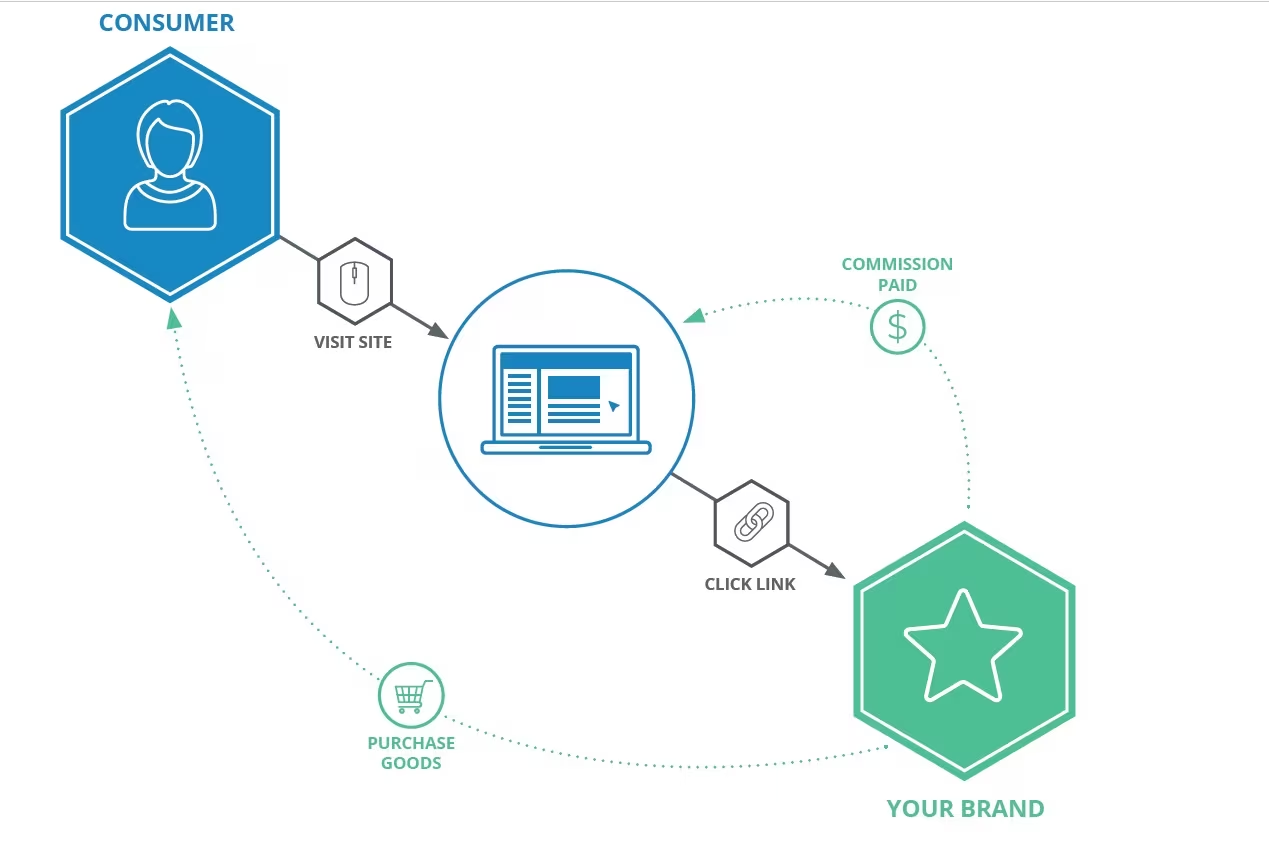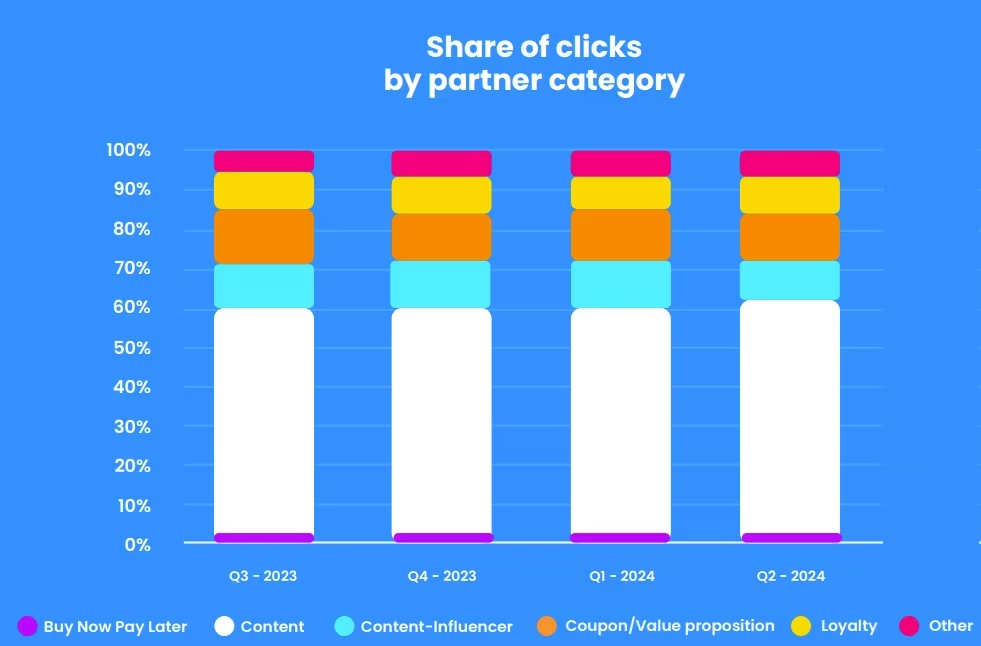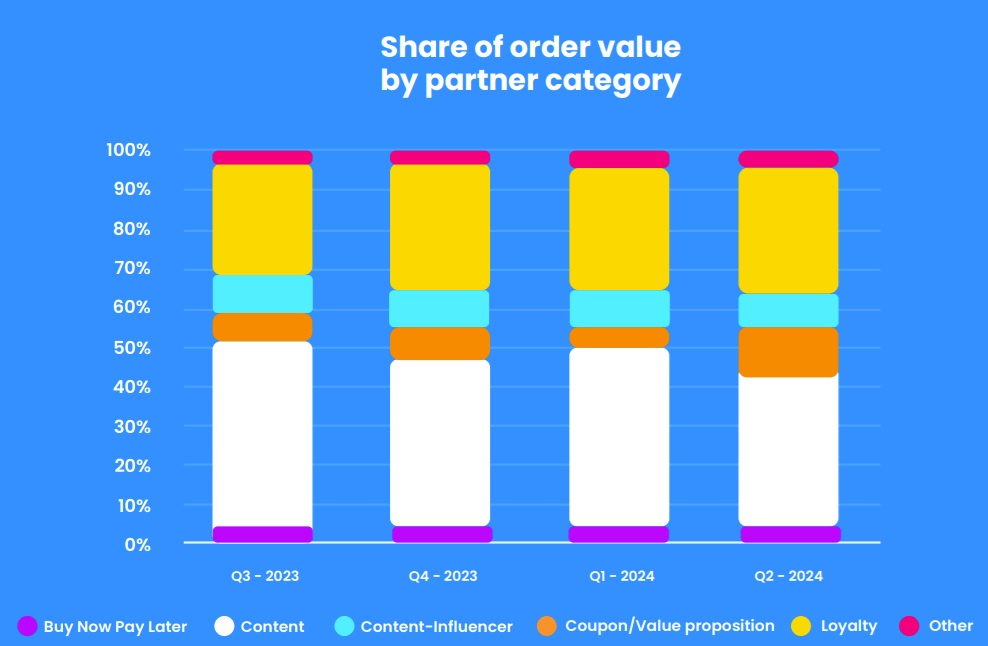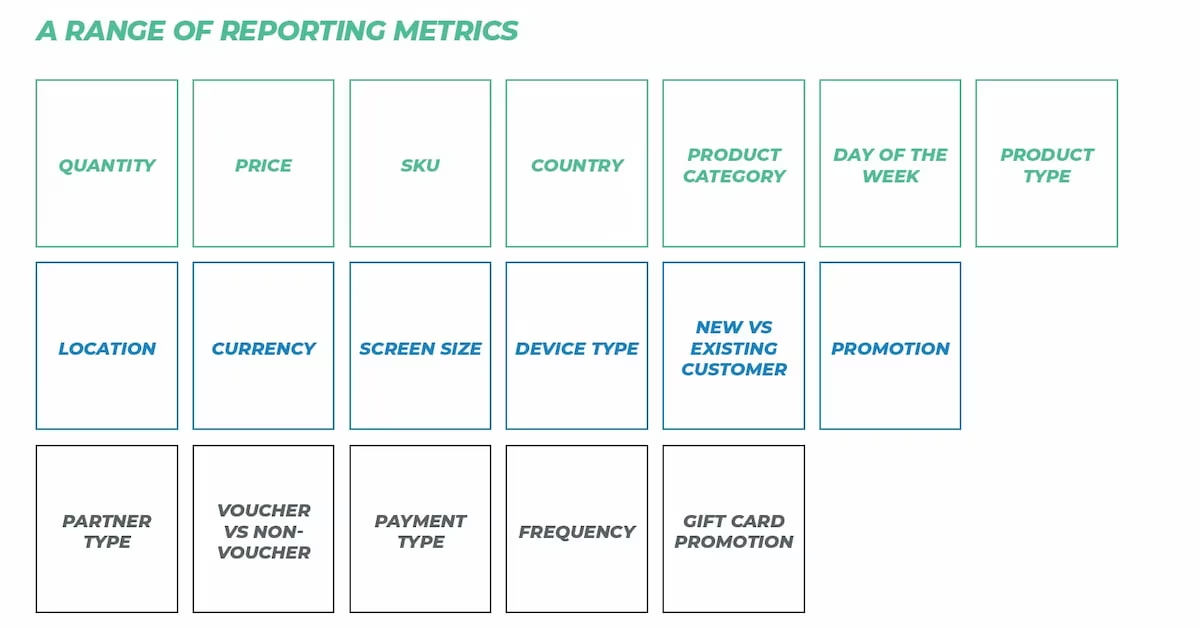For today’s marketer, partnerships have emerged as an extraordinary growth channel and a powerful way to enhance brand equity.
Over the last decade, marketing strategies and tactics have changed rapidly as consumer behaviors have shifted and the media environment has been transformed. As shoppers have become harder to reach and more skeptical of traditional marketing approaches, a growing number of brands have looked to performance partnerships as a means of driving strong growth while simultaneously enhancing brand meaning.
With all of these exciting partnership opportunities, what is in fact more exciting are the capabilities around reporting and insights that a partner marketing platform can deliver. This guide aims to take a deeper dive into the world of partner marketing, how it all works, and how you can establish powerful and lasting partnership relationships based on clear objectives, rewards and metrics.
What is Partnership Marketing?
Partner marketing (or partnership marketing) is when one brand drives traffic and customers to another brand in exchange for value or compensation.
There are as many ways to partner as there are types of companies and publishers to partner with. Many companies begin by collaborating with what we call keystone partners – large publishers and communities whose primary business is partnership. Loyalty communities are another popular choice. B2B partnerships are increasingly popular for companies trying to drive sales with small and medium-sized businesses. And there are what we call transformational partners – brands that bring something unique to partnership — something that can transform the go-to market strategy of your company.


In most cases, the partner brand promotes your brand to its customer base, helping you grow sales. In exchange for that promotion, the partner receives some value in return.
Partnership marketing is predominantly driven on a “cost per acquisition” or CPA model, meaning brands only pay a partner when they make a sale. Partner marketing is a strategy used by leading brands from across the globe and can be applied to almost any vertical or industry.
Why Do Companies Use Partnership Marketing?
Companies use partnership marketing to reach new audiences, increase brand awareness, and boost revenue.
- To Reach New Audiences: Partnering with other companies enables businesses to access a broader and potentially untapped audience. By collaborating with complementary brands or businesses in related industries, they can introduce their products or services to a new customer base. This approach helps expand their market reach and acquire new customers who may not have been exposed to their offerings otherwise.
- To Increase Brand Awareness: Partnering with well-established and reputable brands can significantly enhance a company’s brand awareness and credibility. When businesses align themselves with recognized and trusted partners, they benefit from the positive associations and reputation of those partners. This can lead to increased trust and recognition among consumers, which is essential for building a strong brand presence in the market.
- To Boost Revenue: Partnership marketing can be a strategic avenue for boosting revenue. By collaborating with the right partners, businesses can tap into new revenue streams. This can include generating leads through joint marketing efforts, cross-selling each other’s products or services, and driving traffic to their respective websites or physical locations. These collaborative efforts can lead to increased sales and revenue growth for both partners involved.
How Do Pay-for-Performance Partnerships Work?
-
- A partner signs up to a brand’s partner program
- The partner places the brand’s link on their website
- An end user visits the partner’s website
- The end user clicks the link to the brand’s website
- Partnerize tracks this new traffic
- The end user buys a product from the brand’s website
- Partnerize tracks the sale
- Partnerize reports the sale back to the brand in real-time
- The brand pays a commission to the partner through Partnerize
For marketers past, partnerships often involved a blanket approach and onesize-fits-all compensation.
Today, marketers are partnering with other brands in a whole host of ways. While affiliate programs used to be managed almost exclusively by affiliate network middlemen, today’s partner marketers often choose management tools that enable direct relationships with partners, a range of commission structures and the ability to create partner marketing strategies to push particular products, brands etc. Partner marketing has evolved to focus on commercial collaborations that are strong and accountable business drivers. These partnerships have clear objectives and metrics and drive results that are mutually beneficial.
2010
AFFILIATE MARKETING |
2011 to 2013
PARTNER & AFFILIATE MARKETING |
2014 to 2016
DATA DRIVEN PARTNER MARKETING |
NOW
PARTNERSHIP MANAGEMENT |
- Blogs
- Coupons
- Cashback
- Loyalty
|
- Influencers
- Aggregators
- Blogs
- Coupons
- Cashback
- Loyalty
|
- Meta search engines
- Apps
- Influencers
- Aggregators
- Blogs
- Coupons
- Cashback
- Loyalty
|
- Strategic partners
- Offline & online
- Meta search engines
- Apps
- Influencers
- Aggregators
- Blogs
- Coupons
- Cashback
- Loyalty
|
What Kind of Partners Are There?
With so many different types of partners, it can be hard to understand the complete range of options. To simplify understanding, we’ve broken them down into six broad segments.
Keystone Partners
Keystone partners are brands, often with large customer bases, which are focused on driving rewards for their customers including cashback, discounts etc.
Loyalty Partners
Loyalty partners operate their own customer loyalty rewards programs, primarily rewarding their customers with points.
Metasearch Partners
Metasearch partners, often operating in the travel space, allow customers to search for travel options. Some then refer you to another site for purchase. Others enable you to buy on their sites.
Comparison Partners
Comparison partners provide customers with different buying options when searching for products or services.
Transformational Partners
Transformational partners are brands which partner with other brands in powerful and often surprising ways. Many transformational partners are not companies you might immediately suspect focused on lots of partnerships.
Technology Partners
Technology partners drive traffic to brands through wider digital approaches such as retargeting, bundling and SEO.
Traditional Partnerships vs Transformational Partnerships
Understand the power of transformational partnerships and how they can contribute to your organization.


- New Customer Acquisition: Open up a new, unexplored channel to acquire customers that is unique to partner marketing. Generate new business by targeting engaged customers with relevant products.
- Stronger Customer Loyalty: Improve customer experience by offering products from partners that are relevant to your target demographic to improve customer loyalty and build lifetime value.
- Increased Sales Across Specific Products: Drive sales of profitable products, increase velocity of slow moving products or execute time-sensitive promotions by sharing highly granular, conversion-level data points. For example, a retailer could increase compensation for a travel brand partner who promotes a sale on overstocked swim suits to customers flying to Hawaii.
- Brand Synergy: Improve your brand equity and build trust with your customers by leveraging the reputation of your partner’s brand. Convert this association into sales.
How Much Traffic Does Each Type of Partner Bring?
As of 2024, content publishers bring in the most significant number of visitors per partner.
Here is a chart showing how each type of partner is trending traffic-wise in 2024.


Which Types of Partners Drive the Largest Orders?
As of 2024, content publishers also bring in the orders with the greatest average order value, followed by loyalty partners.
Here is a chart showing the average order value percentage brought in by each type of partner.


How to Select the Right Partners
For enterprise brands, many marketers focus primarily on identifying and partnering with highly scalable partners. When selecting which partners to focus on, it’s important to think about the following:
- Does this partner have a customer base that I would want to target?
- Do this partner’s values align with my brand values?
- Can the partner realistically deliver sufficient scale to warrant a partnership?
- Do they already have partners/appear to be willing to partner?
How to Be Successful With You Partnerships?
The partnerships channel can be whatever you make it. You can choose to pass back infinite data parameters that can help you to track and measure to goals and objectives. The more data you pass back, the more reporting opportunities you have. Before you decide on data parameters, formalize your key objectives by asking yourself the following:
- What is your benchmark for success? Sales? Net new customers?
- Repeat purchases? Specific basket size?
- Do you have specific revenue goals you want to achieve?
- What data do you need to share with partners for them to be successful?
- Which metrics do you need to report back to internal stakeholders?
Once you’ve determined your objectives, you can work out which data to pass back to allow you to report and measure on these objectives, such as the ones outlined in this image.


How to Get Started With Partnership Marketing
There are five key steps to take when starting your partnerships journey:
- Set your goals and objectives for the partner channel
- Decide which key partners you’d like to get started with
- Choose a partner marketing technology to track, report and pay
your partners
- Plan out your timeframe/timeline for on-boarding partners
- Devise your compensation strategies to ensure success
Support for Success
Whether you’re new to the partner channel, or a partnerships veteran, it’s always good to have someone by your side. A dedicated Customer Success professional can help you to think about the following:
• What the right goals are for your brand
• The most effective strategies to achieve those goals
• The strongest partners for your brand
• Commissioning strategies that can deliver success
• Communicating with potential partners
Summary
The world of partner marketing is ever-expanding, and presents endless opportunities to marketers today. By understanding the power of partnership and taking the time to set clear objectives, brands can achieve huge success within this channel.
What’s important to remember is that this arena is all about mutual benefits. While that may sound simple, having direct relationships with your partners and working together to achieve success can result in far more profitable results than simply keeping them at arms length, or failing to consider “what’s in it for them.”
With the ecommerce industry expanding rapidly, it’s more important than ever to partner with brands who align with your values and customer base. By doing this, you form partnerships that deliver both increased sales and brand enhancement.
Want a copy of this document in pdf form? Download it here.
Related Posts: